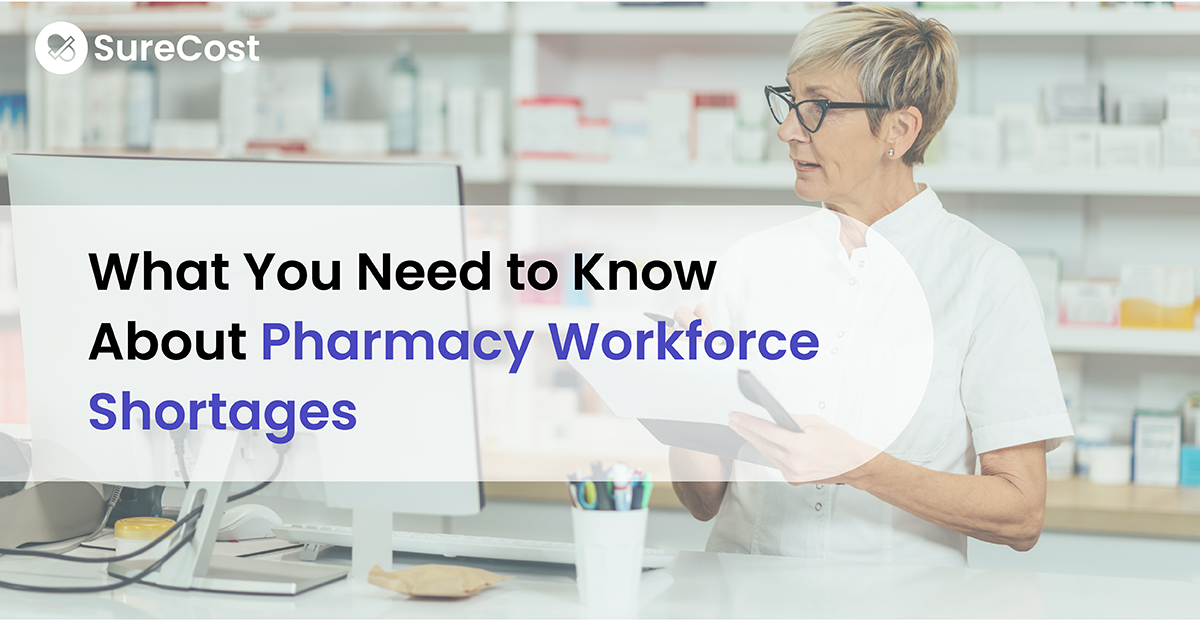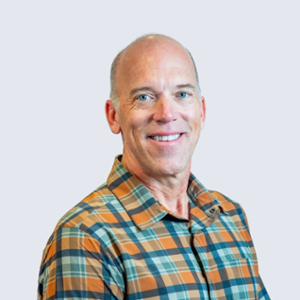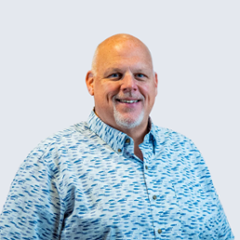Pharmacy workforce shortages have been making headlines for good reason. In recent years, they’re an unfortunate but undeniable trend.
Pharmacists are finding it harder to keep up with the demand for their services, leading to frustrating and potentially unsafe impacts on patients. And there are several factors why this issue will keep growing. That means even longer wait times for prescriptions, reduced hours to serve patients and some pharmacies closing their doors.
In this article, I’ll discuss the origins of pharmacy workforce shortages, what they mean for both the industry and our patients and how we can address these challenges.
Supply and Demand
Pharmacy workforce shortages are a complicated problem that (unsurprisingly) arises from a complex set of conditions. Part of the problem comes down to demand-side factors increasing the need for pharmacists' services.
For example, the pharmacy patient profile has changed in recent years due to an aging population and increased rates of chronic diseases. That means increased demand for medications that, in turn, increases the need for skilled pharmacy professionals to serve these patients and dispense these products.
In addition to increased demand for pharmacy professionals, COVID-19 also led to new demands on these workers. The pandemic caused an increase in workload for all pharmacy staff. One example is the need to rearrange hours, schedules and operations to include the administration of COVID-19 vaccines. Enhanced sanitation procedures are another new demand. The pandemic also increased the urgency of getting medications to sick patients and quickly responding to patients' and physicians' COVID-related inquiries.
Yet there has also been a corresponding shortage in the “supply” of staff—especially in rural areas with fewer pharmacies and pharmacists. Patients in these areas often have to travel long distances to find a pharmacy that stocks their medications. Outdated pharmacy facilities nationwide also complicate things for patients and pharmacy professionals.
At the same time, pharmacies lack the staff to meet their patients’ needs. And the workforce shortages trickle down to all of the staff within the pharmacy—from the procurement lead finding the best prices to the pharmacist filling the prescriptions. But the national pharmacy workforce shortage is not entirely due to a lack of pharmacists.
Burnout
Pharmacies across the United States aren’t just struggling to maintain their workforce. They’re working with a struggling workforce. Many pharmacy professionals are simply burned out due to long hours and stress. For example, when I left my position, four other pharmacist colleagues had already left the company to work in entirely different fields. And I know five others who want to leave in the next few years.
Pharmacy work has always been stressful. Pharmacists are responsible for ensuring that the medications prescribed to patients are effective and safe. They must also account for potential interactions between different drugs. Pharmacists may also be asked to fill prescriptions at a moment's notice and work longer hours, especially during busy periods (like a flu outbreak or pandemic).
Now, with the increasing number of prescription drugs, it is becoming more difficult for pharmacists to keep up with the latest information on drug interactions and side effects. It’s not easy for patients, which is why pharmacists are often also responsible for counseling patients on those medications.
The performance of new COVID-related tasks now overlaps with regular daily requirements, causing staff to shift focus between tasks at an even more rapid rate. On a given day, a pharmacist may be expected to:
- Check out customer orders at cash registers
- Serve patients at separate drop-off and pick-up windows
- Answer medication questions from patients and their families
- Call doctors to correct issues with prescriptions
- Take calls from physicians regarding incoming prescriptions
- Administer vaccines to members of their community
- Complete medication therapy management claims
The stress of pharmacy work is not limited to filling prescriptions. Finding the right prices for products in a complex purchasing environment is a time-consuming and sometimes frustrating process. Effectively managing your inventory to avoid spoilage, shortages, and unnecessary orders is another important but complex task. And that’s assuming everyone at the pharmacy has such a specialized role.
Staff at many retail pharmacies have the additional stress associated with multitasking and wearing many hats. If you’re a pharmacist, you may also be the manager of your staff as well as an advisor to your patients. If there’s an issue with a team member or a distressed patient, you may also be the human resources liaison and store manager. That’s on top of becoming a problem solver when you catch a doctor’s mistake or a vendor not complying with your contracted product price. You may end up working 14-hour shifts without breaks!
The Long Term for Patients and The Industry
Many pharmacy professionals are leaving the industry, and pharmacies are stuck trying to find qualified staff to fill a variety of open positions. Staff shortages illustrate the crucial relationship that pharmacists have with patients.
Staff shortages can mean longer wait times for prescriptions, less availability of medications and increased costs. That means a greater impact on a patient’s budget and health. In some cases, the patient may not be able to receive the medication they need, which can have serious health consequences.
The stress and frustration for pharmacists can result in medication errors and other safety concerns. Staffing shortages lead to a burned-out workforce and patients not receiving prompt quality care. The worst-case scenario is a pharmacist/technician stretched so thin that they give the wrong vaccine to a patient or incorrectly verify a prescription.
Unless changes are made at a state and national level to change how corporations run the pharmacies, fewer pharmacists will stay in retail until retirement and fewer college graduates will go into retail. The University of South Florida reported that 90% of their pharmacy graduates go into residencies (training for pharmacist jobs outside of retail), which leaves only 10% to work in retail settings.
Overall, the job market for pharmacists is likely to be somewhat flat in the coming years. In the long term, while some may lose jobs due to automation, new positions will likely be created as pharmacies shift to providing more services like immunizations and health screenings. However, the growth in these new positions is expected to be slower than the growth in the number of pharmacists who are retiring or shifting due to burnout.
The key is to be aware of the pharmacy industry trends and position oneself accordingly. Those who can do this should be able to find good jobs in the years ahead. There are certainly some challenges facing the profession, but many opportunities exist to improve the situation.
Solutions
This is a national issue that affects the quality of patient care. It’s crucial to address the causes of pharmacy workforce shortages to protect the safety of both pharmacists and patients.
A crucial first step to addressing pharmacy workforce shortages is increasing the number of trained pharmacists available to work. Another option is allowing pharmacists to practice in multiple states, which would increase the availability of pharmacists in rural areas. Ultimately, it is important to find a solution to the pharmacy workforce shortage so that everyone has access to the medications they need.
Some action is taking place at the state level. For example, California has created a task force to develop strategies aimed at improving the availability of pharmacists. But more needs to be done to ensure that every patient has access to their medications with a skilled pharmacy team on hand to serve them.
To fill the gaps, some pharmacies have begun to explore automation. This has caused concerns that robots will replace pharmacists, leaving us with no one to dispense our medications. Yet while machines can count and package prescriptions to a limited capacity, the manual verification of information for accuracy and working with physicians to address issues requires a pharmacist. It is more likely that pharmacists will use automation to assist them in their work (rather than replace them).
Many pharmacists are excited about using robots in their work because automation can increase efficiency and accuracy. Automated systems leave the pharmacist free to focus on tasks such as patient consultations and medication reviews. So while there may be some shortages of pharmacists in the short term, it is unlikely that robots will ultimately take their place. Instead, we can expect to see more pharmacies using robots to assist pharmacists in their work.
Reducing Burnout
Automation and other technological solutions are examples of how pharmacy professionals are fighting the core issue of burnout. Solutions that help pharmacies to streamline workflows and enhance operations achieve ROI based on saving time. They also provide data transparency that can lower the cost of goods and inform strategy.
Many pharmacists also find that maintaining a good work-life balance is essential in preventing burnout. There are some well-known, tried and true tips to reduce stress and prevent burnout:
- Avoid working weekends or extra hours.
- If you have to work overtime, take a break afterward.
- Stay organized by finding ways to enhance your work
- Talk to peers and build a close network of problem solvers.
- Make a schedule and try to stick to it as much as possible
This can be difficult due to extended hours and demanding tasks. But it’s crucial to take some time for yourself outside of work, to stay organized, and stay connected. Whether that means spending time with friends and family or taking some time for yourself each day, it is essential to find something that helps you recharge.
In extreme cases, work part-time or pursue another field. Pharmacy work is a stressful job. And it has become even more stressful in recent years. I worked as a pharmacist for ten years and a technician for eight years. But, since the pandemic, I’ve seen newly graduated pharmacists who want to leave retail after just two years of work.
Patients can also take small steps to make their local pharmacist’s job easier. If there is a delay in filling a patient’s prescription, it’s helpful for them to remember that pharmacists are doing their best while being overwhelmed with work.
Change to: It is important to advise patients to self-manage their prescriptions. Even though the patient may only normally get a 30 day prescription filled at a time, a 90 day fill authorized by the patient’s prescriber will decrease the amount of work for the pharmacy overall. The patient will only need to make one trip and one call to the pharmacy within a 90 day period for that medication, allowing pharmacy staff to focus on other tasks that are equally as important.
Help patients to stay organized. Ask them to have all of their prescription information ready when they visit the pharmacy or call ahead—and don’t wait until the last minute to pick up their medications. These are all small steps that reduce unnecessary delays.
Finally, never forget the importance of basic kindness and an understanding of pharmacists’ vital contributions to society. Be patient, be kind and be thankful for what a pharmacist contributes to the health of patients. Pharmacists are the safety net of healthcare and the most accessible to patients.
There's No Easy Fix
Many factors contribute to the pharmacy workforce shortages in the United States, and no one solution is likely to fix the problem. Addressing the root causes of these shortages requires a concerted effort from policymakers, healthcare providers, patients, and pharmacists.
By taking the appropriate steps to recognize the issue and address it, we can ensure that everyone has access to the medications they need from knowledgeable and attentive pharmacy professionals.
If you’re dealing with your own staff shortages or are interested in solutions that will reduce team burnout, book a meeting with one of our experts today.








.png)